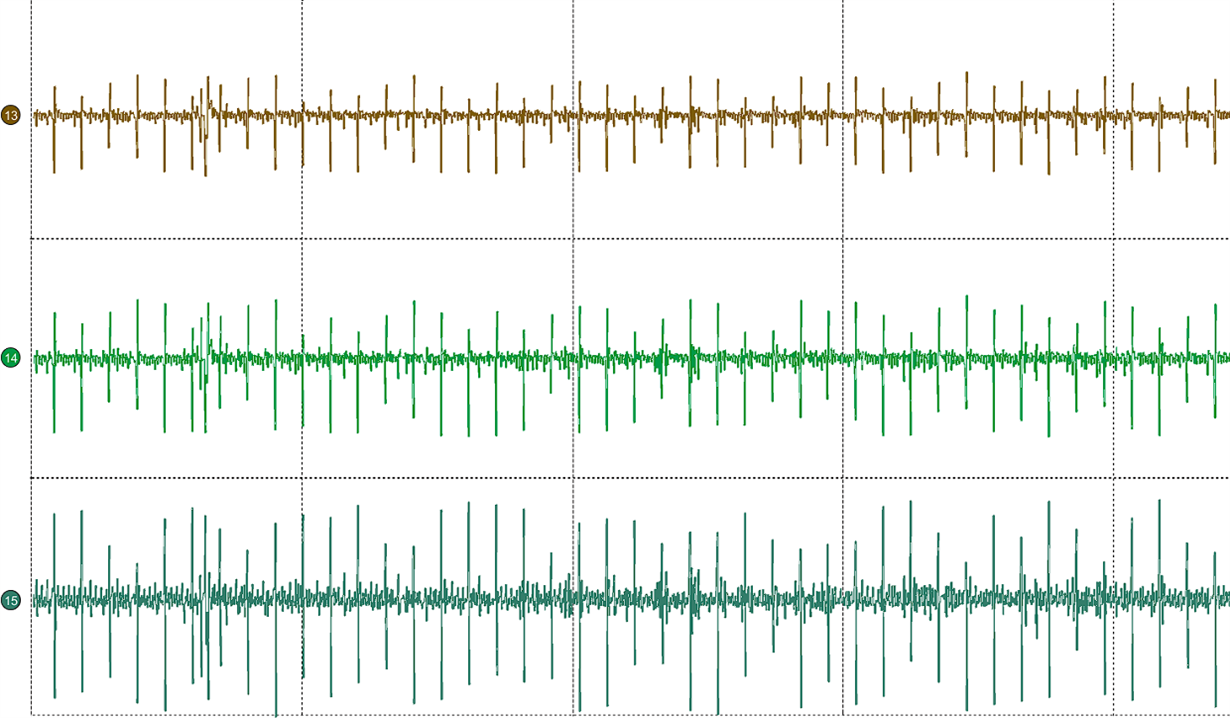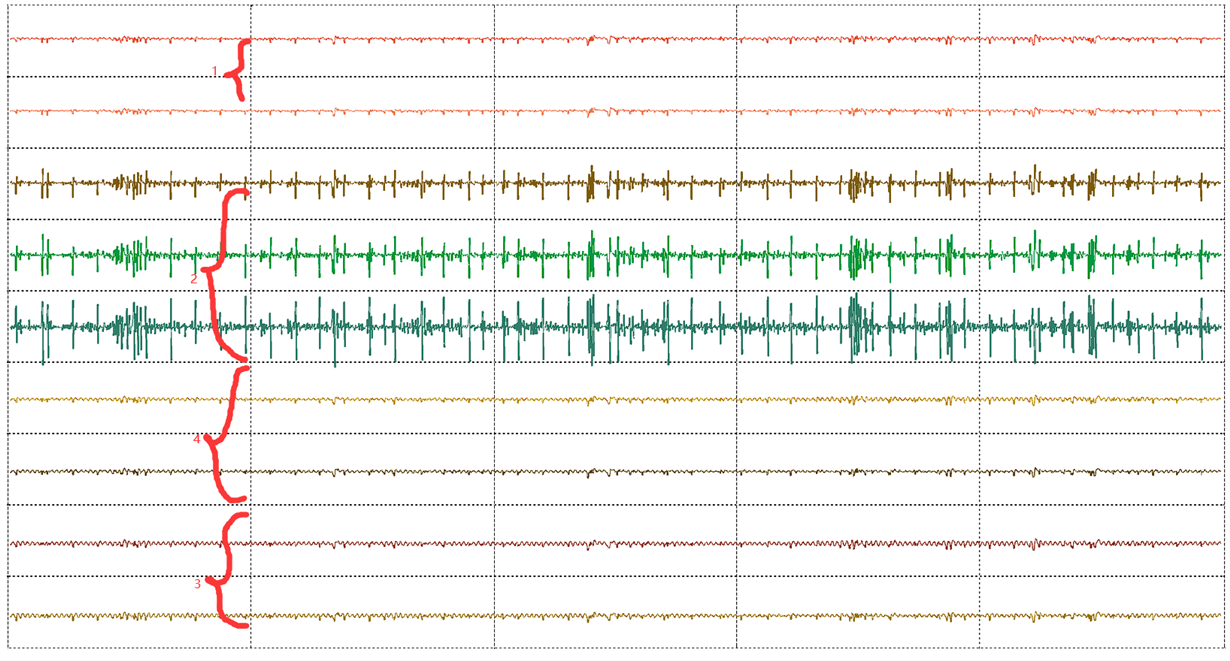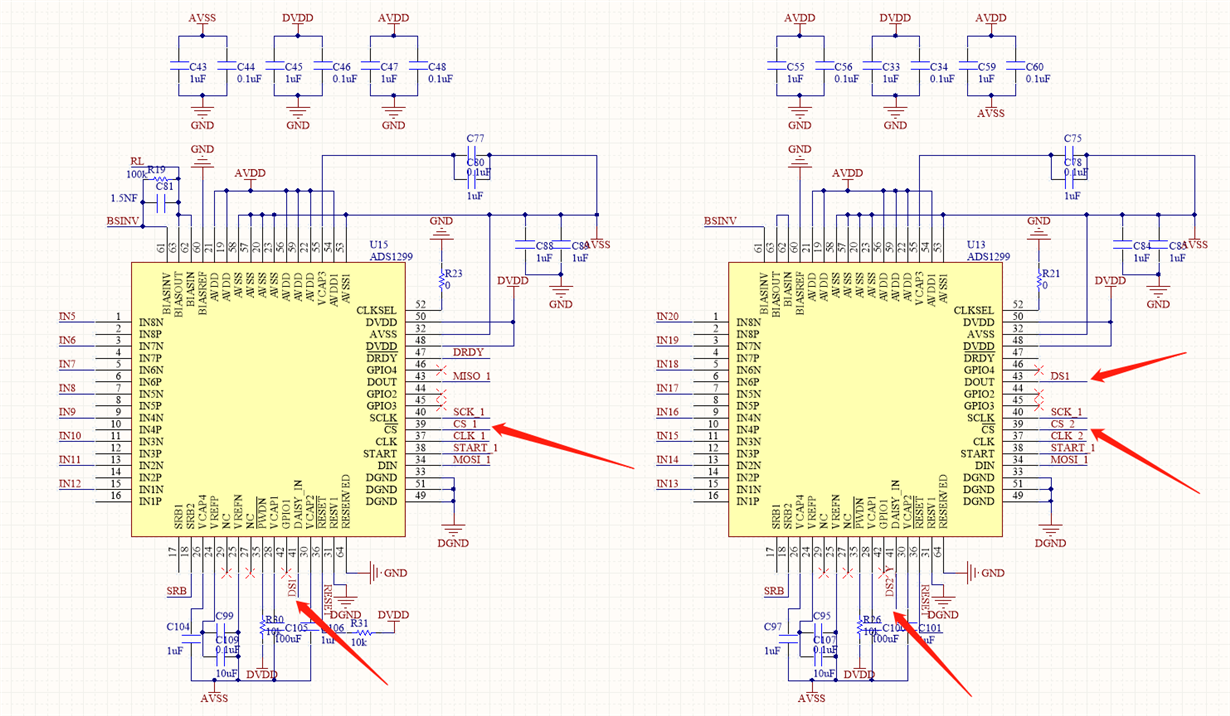Other Parts Discussed in Thread: SN74AHC1G126, LMK1C1104
Hello, Ryan! I'd like to ask you some questions.
we encountered the following problems in the process of debugging ADS1299: Connect four ads1299 chips in daisy-chain mode to receive data and connect REF, GND and all inputs in parallel through 10K resistors at the input end. When testing the noise, spike interference with a frequency of about 9.76HZ will occur, but on a single ADS1299, or all four ADS1299 front ends are short-circuited, there is no such noise. Is it the internal noise of the ADS1299 or is it possible that other places will interfere with it?
Here's our circuit:
First of all, this is a partial schematic diagram of the four ADS1299:
As we can see, we used DAISY_IN, DOUT, CS1, and CS2 pins at the same time because we want to use both daisy-chain mode and cascade mode at the same time. Use multi-cascade mode (cascade mode) to configure each ADS1299 individually, and then use daisy-chain mode to read ADC conversion data with four ADS1299s together.
At the same time, in order to ensure that the four ADS1299s have the same clock source, a 2.048Mhz active crystal oscillator (oscillator) is used, and then input to each ADS1299 through a 1:4LVCMOS Clock Buffer, namely LMK1C1104. At the same time, in order to prevent the second ADS1299 and the third ADS1299 from being too far away from the daisy-chain mode (daisy-chain mode) reading data error, I also added a piece of data between the second DAISY_IN and the third DOUT Buffer (single bus buffer), namely SN74AHC1G126, is as follows:
The next phenomenon is:
Our first choice is to short-circuit all the inputs of the four ADS1299s, as well as SRB and BIADOUT. The noise is very low and there is no obvious interference. No obvious noise appears on the time domain graph and frequency domain graphh.
But when we connect all inputs, SRB and BIADOUT in parallel through resistors, as follows:
In this case, there will be a spike with a frequency of about 9.76hz, which is very obvious on both the time domain graph and the frequency domain graph.
We try to connect at least two resistors to the input of each ADS1299. Just look at the input signal connected to the resistor. We can see the spikes as follows:
One of grids is the window length of 1s, and there are about 10 peaks in one lattice.
Here is the frequency domain of the two minute data:
As shown above, we can see that there is a frequency of 9.76HZ and its frequency doubling.
There is no noise when the input is short-circuited, and there is noise when the electron is connected. At first, we suspected that it was caused by resistance, so we used a circuit board with only one ADS1299. As before, we measured the input terminal in parallel with the resistance and found that there was no noise. Low, the signal is as shown:
As shown above, it can be seen that there is no spike noise when there is only a piece of ADS1299.
And we also found a strange thing, each of our ADS1299 has at least two inputs connected to resistors, the test found that only the second signal noise is abnormally high, the noise of the other pieces is basically the same, and we have several After the circuit board was changed, it was found that the second piece was very noisy. Explain that it may be a design problem or ADS1299's own problem, it should not be external influences such as welding. As shown:
Because a signal buffer (single bus buffer) is added between the second and third slices, it is suspected to have an impact on the signal, but after shorting the two slices DAISY_IN and the third slice DOUT, it is found that there is no signal improve.
It should be noted that the power supply circuit and main control of the four-chip ADS1299 and the single-chip ADS1299 are exactly the same. At the same time, we also analyzed the source of this 9.76hz, 2.048Mhz oscillator is divided down to 7.8HZ, SPI communication rate is 5Mhz down to 9.53HZ, and the main control 80Mhz is divided down to 9.53HZ. All power supplies use LDO without oscillation frequency. Is it caused by RC oscillation? Finally, the source of the frequency was not found.
We now mainly have the following questions:
1. Will ADS1299 generate a frequency of 9.76HZ? If not, where is this most likely introduced from?
2. The noise of the second ADS1299 is very high. What causes this phenomenon? Is there any way to eliminate it.
3. There is no noise while short-circuited and there is noise when the resistance is connected?
4. For the same circuit, why is there no noise with a piece of ADS1299 and why is there noise with four pieces of ADS1299?
Ryan and the experts please help me to answer, I know there are a lot of descriptions, but this has troubled us for a long time.
Best regards










